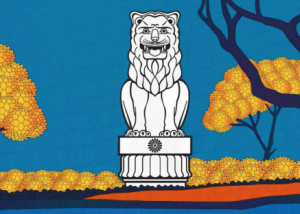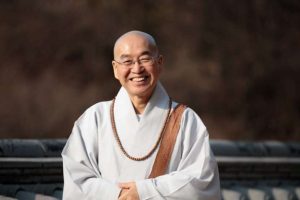Montse Castellà Olivé was originally interviewed for Buddhistdoor en Español. The following is a translation of that interview. This article is part of the Buddhistdoor en Español special edition on “Women and Buddhism in Spanish-speaking Countries.”
Montse Castellà Olivé has been a practitioner of Tibetan Buddhism since the late 1970s. With authorization from her master, Lama Thubten Yeshe, she leads meditation retreats and workshops integrating the practice of qi gong. She is an editor and translator of Buddhist texts—of which Women of Wisdom (Snow Lion 2000) by Tsultrim Allione and Dakini’s Warm Breath (Shambhala 2002) by Judith Simmer-Brown merit special mention—and is the author of numerous articles on women and Buddhism and on interreligious dialogue. She is the cofounder and vice-president of the Catalan Coordinator of Buddhist Entities (CCEB), the founding president of Sakyadhita Spain, and chair of the UNESCO Association for Interreligious Dialogue (AUDIR in Catalan).
Sakyadhita Spain is a subsidiary of the Sakyadhita International Association of Buddhist Women, a movement that cuts across all Buddhist traditions with a horizontal organisation structure, offering a participative platform for communication between Buddhist women throughout the world. Its mission is to incorporate women’s visions and experiences into the heart of Buddhism, and to contribute to social transformation.
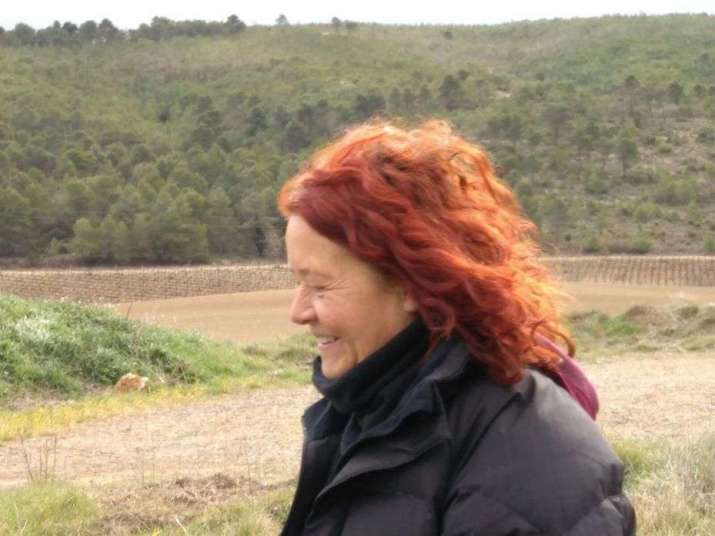
Buddhistdoor en Español: Montse, you have been a dedicated practitioner of Buddhism since the end of the 1970s, so you must have witnessed changes in the situation of women and Buddhism over the course of the years. What are the main changes you have seen? What are the main barriers that persist today?
Montse Castellà Olivé: Since the 1980s, we can recognize major changes, such as larger numbers of recognized female masters. Another important advance is the fact that in 2016 the Geshema degree was awarded for the very first time in the history of Tibetan Buddhism to a group of female monastics, a high academic title only accessible before then to monks. With regard to Zen Buddhism, another astonishing fact is that in many Zen temples—for example in San Francisco and the centre in Barcelona—they recite the names of 54 female masters, the matriarchs of Zen, which is unheard of in the history of Buddhism. In this entire process, the extraordinarily important role of Sakyadhita must be highlighted. This organization has been essential for giving Buddhist women their voice, promoting gender equality, and having an impact on creating more Buddhist training and study opportunities for women. It must also be highlighted that without the help of several male Buddhist leaders, most of these advances would never have become a reality.
With regard to the entire process, we could say that there is only one real barrier—but one that colors everything. This fundamental obstacle arises from the fact that Buddhism, like the majority of religions, is strongly marked by the cultural conditioning of the patriarchal societies typical of the ages in which they originated. Overcoming this obstacle will take time as it involves a radical transformation, during which the parts that are cultural and those that are essential must be differentiated. Likewise, we will need to determine what must be transformed and what must be preserved. Any discrimination toward women in the heart of Buddhism is a cultural issue and must therefore be transformed. As the Dalai Lama says: “It must be you—the women—who drive change forward.”
In this regard, Sakyadhita took the initiative to take on this task in 1987, the year in which it was founded. It is the only non-sectarian Buddhist organization integrated with women from all Buddhist traditions. Its structure is horizontal and flexible, instead of hierarchical and pyramidal, which promotes equality along with co-operation and co-creation. Its mission is to overcome the androcentric vision in which Buddhism is strongly steeped. However, we must bear in mind that, although it is women who are taking the initiative, it is also important for men to feel involved in the process and that they also act to implement these changes.
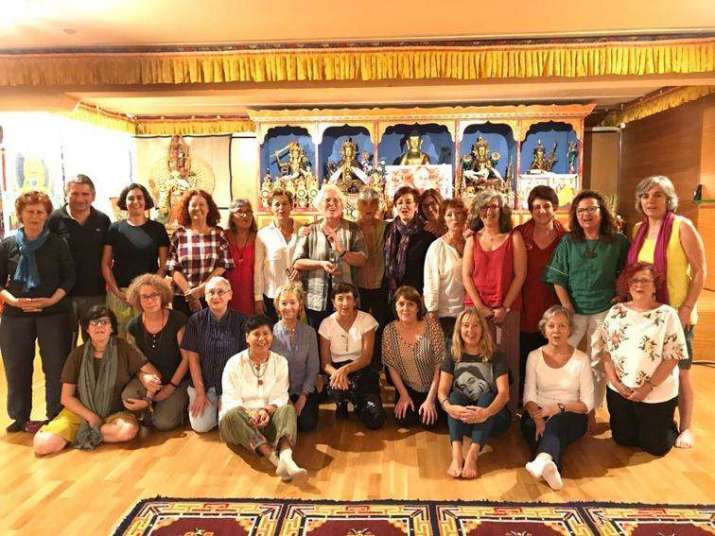
BDE: Despite the progress in recent decades, it is still true that patriarchy and inequality continue to be deeply rooted. Yet there are many marvelous women doing extraordinary work to advance the cause of women. Every day there are more female Dharma masters, leaders, and spokeswomen changing the structures of power. Their contributions are transforming the Buddhist landscape for new generations. What can we do so that more female Buddhists flourish? What are the main psychological barriers that women face?
MCO: First of all, it is important to bear in mind that the teachings of Skakyamuni Buddha were always transmitted orally, and it was not until 500 years after his death that they started to be compiled in writing. Those who were responsible for making these transcriptions were male monks and they considered these teachings to be directed at male monks. Thus, in order for Buddhism to continue to be a valid path of liberation for modern-day society, women—both nuns and laywomen—have a responsibility to do the work of rereading the teachings from a gender perspective and, in parallel, to promote the transmission of Buddhism through female masters.
In this regard, we must acknowledge that there has been great progress, although it is also true that there is still a long way to go and much to do. Becoming aware of this context is crucial. In my case, it was through translating Women of Wisdom by Tsultrim Allione in 1990 that I realised that women’s visions and experiences are not collected in Buddhism; that the lines of transmission were primarily male; that in the texts, when they did refer to women, they always appear as objects and not as subjects. The cultural conditioning of the patriarch that we unconsciously drag along with us is so deeply rooted that often we do not even see it. To give an idea of this, the word woman in Tibetan means lower rebirth. This is the most important psychological barrier that women face: recognizing their own cultural conditioning. To overcome this barrier, spaces must be created in which these questions and issues can be brought up, sharing experiences with other women, and perhaps daring to create new and different ways of being and doing.

BDE: In this task to reconstruct Buddhism based on an inclusive vision, what are the main challenges we will have to face?
MCO: When we talk about gender equality we are of course referring to the fact that women must have the same rights and opportunities as men. Work along this line is totally essential, and there is a lot to do. Nonetheless, the challenge is to not remain stuck on this point; our vision must go further. It is not just about ensuring that women can do the same things as men, but opening ourselves up to the possibility that just maybe women want to do things in a different way. In this regard, we are not speaking simply about men and women, but the values that are associated with that which is feminine and masculine. And I don’t mean culturally acquired attributes, but feminine and masculine traits that shape who we are as human beings.
This entails recognising that—for centuries—the values that have prevailed and that have been overvalued have always been those traits associated with what is masculine: competitiveness, reasoning, a fragmented vision of reality, and individualism. Consequently, everything related to that which is feminine has been undervalued: cooperation, intuition, an integrative or holistic vision, and a sense of community. At a social level, this is clearly reflected in the hierarchical and pyramidal structure of patriarchal society, men (White) holding the highest positions and women, along with nature, holding the lowest positions. The era of change in which we are currently immersed urgently requires an awakening to the feminine side that is within each and every one of us. In that regard, it is mainly women—throughout the world—who are proposing, promoting, and putting into practice, both individually and socially, new ways of seeing and of acting. We will see the impact this whole process has on Buddhism.
BDE: In general terms, could we say that Buddhist women are active in the interreligious field?
MCO: Women are subjected to discrimination due to their gender in the majority of religious traditions. Thus, what I mentioned earlier could also be applied to any other tradition. However, while this fact is considered a barrier, it also represents a great opportunity at the same time: that of creating connections with women beyond their own traditions. Thus, a cross-cutting interreligious movement of women is being created. Sakyadhita Spain is active in the cocreation of this movement and participates at gatherings and meetings that enable us to share experiences and learn from each other and develop useful resources.
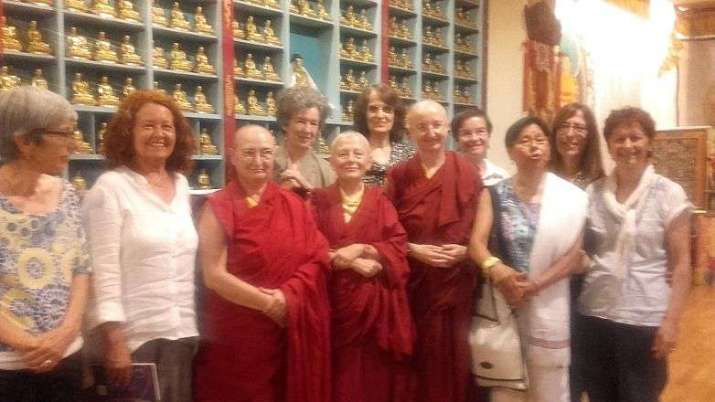
BDE: One of the explicit goals of Sakyadhita Spain is to “establish connections with Spanish-speaking countries to publicize Sakyadhita International, to promote working committees, and to create a network for exchange and support among the subsidiaries of Sakyadhita that are established in Spanish-speaking countries.” Could you tell us about the advances Sakyadhita Spain has made in this direction and your future plans?
MCO: Our first connection with Latin-American Buddhist women was thanks to Guelongma Lama Tsondru, cofounder of Sakyadhita Spain. She frequently gives teachings in several Spanish-speaking countries and, through her, we made contact with the Dharmadatta community. In 2017, we invited Ven. Damcho to give a conference in Barcelona. Since then, we have mutually supported each other in disseminating the teachings of female masters through our respective YouTube channels. Moreover, Berta Meneses, a Zen master and cofounder of Sakyadhita Spain, leads sesshins in several Latin-American countries and through her we have contacted some women in El Salvador, as well as in Puerto Rico and Brazil.
The fact that we share the same language is a huge advantage that we must know how to take advantage of. We post different materials that we prepare on our website: videos subtitled in Spanish, articles, news, a bibliography of female authors on Buddhism, activities we organise. . . . And we share all of this with the Spanish-speaking women who contact us. We also offer our support and, if necessary, help them to create subsidiaries of Sakyadhita International in other Spanish-speaking countries.
In 2018, we organised the first Sakyadhita conference for Spanish-speaking countries, at which several Latin-American women had the chance to participate via videoconference. Our objective is to hold a new edition every two years and to continue weaving networks among Spanish-speaking Buddhist women.
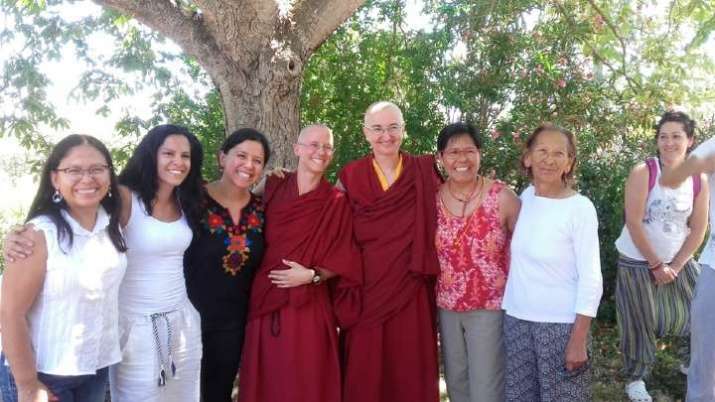
led by Ven. Damcho. Image courtesy of Sakyadhita Spain



